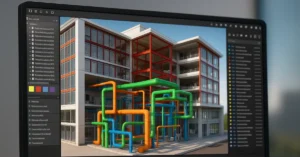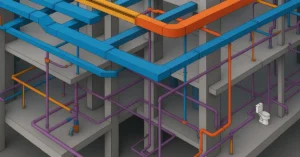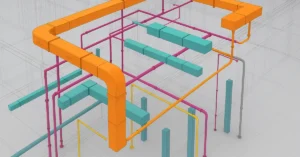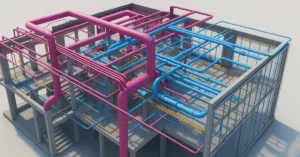Discover the most remarkable brutalist buildings in Bangkok
Bangkok is often admired for its dazzling temples, futuristic skyscrapers, and vibrant street life, but hidden within the city’s architectural sprawl lies a lesser-known treasure: brutalist buildings. These raw concrete structures, shaped by utilitarianism and bold design choices, are more than just gray slabs in the urban landscape—they are historic artifacts of a transformative period in Thai architecture.
Brutalism in Bangkok, like elsewhere in the world, emerged in response to post-war demands for practical yet enduring design. However, Bangkok’s tropical climate, local craftsmanship, and urban needs gave it a unique twist. This blog will explore the most significant brutalist buildings in Bangkok, how they came to be, and their cultural relevance today.
Understanding Brutalism in the Thai Context
The brutalist architectural movement was born in mid-20th-century Europe, especially in post-war Britain. It is characterized by its emphasis on raw materials, functional design, and minimal ornamentation. Bangkok embraced brutalism during the 1960s through the 1980s, when the city experienced rapid modernization, urbanization, and educational expansion.
In Bangkok, brutalism found a functional canvas in universities, government buildings, and public infrastructure projects. Due to limited resources but a growing need for public spaces, architects favored inexpensive, durable materials such as reinforced concrete.
At the same time, Thai brutalist buildings incorporated subtle regional adaptations: shading techniques for tropical heat, localized construction methods, and design references to Thai cultural identity.
Top Brutalist Buildings in Bangkok
1. Faculty of Architecture, Chulalongkorn University
Location: Phaya Thai Rd, Pathum Wan
Year: Late 1960s to early 1970s
A prominent example of Thai brutalism, this structure embodies the core principles of functionality and expressive concrete. As one of Thailand’s leading institutions for architectural education, it is fitting that the Faculty itself reflects the boldness and honesty of brutalist ideals. The exposed concrete fins, deep-set windows, and compact geometric forms make it both a functional academic space and a statement piece.
2. Bangkok Bank Headquarters (Silom Road)
Location: Silom, Bang Rak
Year: Early 1980s
Once Bangkok’s tallest building, the original Bangkok Bank headquarters is a striking brutalist landmark. Its heavy massing, vertical window ribbons, and use of angular forms make it a textbook example of corporate brutalism in Southeast Asia. Though overshadowed by newer skyscrapers, it remains a defining feature of the Silom skyline.
3. Thai Airways Headquarters
Location: Vibhavadi Rangsit Road
Architect: M.L. Tridhosyuth Devakul
Year: 1980s
The Thai Airways office complex is both monumental and mysterious. Large concrete facades with deep recesses and grid patterns evoke a sense of discipline and permanence. Built during Thailand’s aviation boom, the building was meant to symbolize national pride and global ambition.
4. Thammasat University Dome Buildings
Location: Tha Prachan Campus
Year: Mid-20th century
Thammasat University’s historic buildings have undergone many renovations, but some of their mid-century brutalist structures remain. The concrete grid exteriors, shaded corridors, and blocky massing illustrate practical adaptations of brutalism to Bangkok’s educational environment.
5. Government Complex (Chaeng Watthana)
Location: Lak Si District
Year: 2000s
While more recent than traditional brutalist structures, the Government Complex still exhibits many brutalist traits: raw concrete, scale, and repetition. Housing numerous ministries, this expansive site was designed for administrative efficiency, with architecture that communicates order, strength, and functionality.
6. National Theatre of Thailand
Location: Rachini Road, near Sanam Luang
Year: Late 1960s
With its monumental facade and minimalistic ornamentation, the National Theatre exhibits key brutalist characteristics. It contrasts sharply with the ornate temples nearby, signaling a shift toward modern national identity during the Cold War era.
7. Thai Red Cross Society Buildings
Location: Henry Dunant Road
Year: 1970s
These medical and educational buildings use brutalist architecture to convey stability and service. Exposed concrete, overhanging slabs, and large cantilevered sections reflect an era when form followed function, especially in healthcare infrastructure.
8. Old Office of the Fine Arts Department
Location: Na Phra Lan Rd, Phra Nakhon
Year: Mid 20th century
This underappreciated gem near the Grand Palace is built in a clean, functional brutalist style. Stark concrete surfaces stand in contrast to the ornate heritage structures nearby. It represents a fascinating juxtaposition of old and new, and the gradual evolution of Thai national architecture.
Why Brutalism Found a Home in Bangkok
Brutalism arrived in Bangkok at a time when the city was rapidly evolving. The 1960s-1980s saw unprecedented economic and population growth, leading to urban expansion, the establishment of new universities, and the modernization of public institutions.
Thai architects trained abroad brought back ideas from Europe and Japan, which they adapted to local conditions. Brutalism provided an affordable, quick, and enduring solution to growing infrastructure needs. The style’s emphasis on strength and function suited a country balancing tradition and transformation.
Brutalism also aligned with state ideologies of the time, emphasizing progress, unity, and self-reliance. The government’s investment in monumental public buildings became a showcase of national development.
Brutalism and the Thai Identity
Though an imported style, Thai brutalism did not remain foreign. Architects localized its aesthetics to fit Thai climatic, cultural, and urban contexts. Sunshades, ventilation blocks, and building orientation were adapted to reduce heat gain in the tropics.
Moreover, elements of Thai symbolism and symmetry were occasionally integrated into these concrete forms, making them distinct from their European counterparts. The brutalist buildings in Bangkok reflect not just imported ideas, but an evolving Thai identity expressed in modern form.
Public Perception and Shifting Attitudes
For many years, brutalist buildings in Bangkok were overlooked or underappreciated. They were seen as outdated relics, often associated with government bureaucracy or rigid academia. However, a new generation of architects, artists, and urban explorers is re-evaluating their significance.
Social media platforms like Instagram have played a role in reviving interest, turning these concrete giants into subjects of photography and design critique. Heritage advocacy groups are pushing to preserve select structures, especially as rapid urban development threatens to replace them with glass-clad towers.
Challenges of Preservation
Brutalist buildings face unique preservation challenges in Bangkok. Concrete deteriorates under the humid climate, and maintenance is costly. Furthermore, the economic pressure to develop prime urban land has led to the demolition of several mid-century structures.
There is also a lack of formal heritage recognition for many brutalist sites. Without legal protection or public support, many of these buildings remain vulnerable. Preservation efforts now call for adaptive reuse—repurposing old brutalist structures for new functions while retaining their architectural integrity.
The Future of Brutalism in Bangkok
Bangkok stands at a crucial juncture. The city is modernizing rapidly, with a preference for high-tech glass and steel construction. However, there’s growing awareness of the importance of preserving the layers of its architectural history.
Adaptive reuse projects, such as turning old brutalist offices into art galleries or co-working spaces, offer a sustainable path forward. They demonstrate that these buildings are not just relics, but resources.
By embracing its brutalist heritage, Bangkok can tell a more complete story of its urban evolution—one that includes both golden temples and gray concrete towers.
Conclusion
Brutalist buildings in Bangkok may not fit the typical image of Thai beauty, but they offer something equally valuable: honesty, strength, and a bold response to an era of change. From universities to government headquarters, these structures carry historical weight and architectural merit.
As the city races toward the future, it must also ask: what is worth preserving? Bangkok’s brutalist buildings deserve a place in that conversation. They are concrete memories of a transformative era—one that shaped the Bangkok we know today.
Whether you’re an architecture enthusiast, a traveler, or a local, keep an eye out for these fascinating structures. They might just redefine the way you see Thailand’s capital.
If you’re interested in learning more about architecture firms in Europe, check out this comprehensive list of the top 50 firms compiled by Archgyan. From innovative startups to long-established industry leaders, this list has it all. Take a look and discover some of the most inspiring and influential architecture firms in Europe today.
If you’re interested in architecture and want to learn more about this amazing field, subscribe to our podcast on youtube
For more SketchUp tutorials, head to https://www.sketchupguru.com










